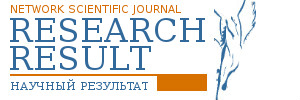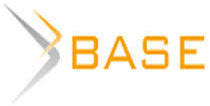Victimization in adolescence: the role of social ties and the quality of relationships in the family and school community
Introduction. Currently, there is an increase in the risks of victimization among representatives of different age and social strata, including young people. The aim of this study was to reveal the role of the quality of students’ relationships with peers and parents in the determination of their victimization. Materials and methods. Russian university students (M=105) took part in the study. The following methods were used: a demographic questionnaire, O.O. Andronnikova's Methods for Studying propensity to Victim Behavior by O.O. Andronnikova, G. Armsden and M. Greenberg's Parent and Peer Attachment Questionnaire, Alvarez's Family Social Capital Questionnaire, Lau and Lee's Student Social Capital Questionnaire. The obtained results indicated the positive role of secure attachment to the mother and to the friend, family cohesion and the negative role of conflicts in the family in the prevention of victimized behavior in adolescence Realised victimhood is more closely related to mother attachment than to father and friend attachment. Communication and cohesion among family members prevent the realisation of victimhood, while conflictual relationships within the family contribute to it. The propensity for aggressive behaviour is determined by the characteristics of attachment to mother, father and close friend; family relationships, attachment to mother and attachment to friend predict the propensity for self-harm; the propensity for dependent and uncritical victimization is determined more by family relationships than by peer relationships. The practical significance of the results is discussed.

















While nobody left any comments to this publication.
You can be first.
Andronikova, O.O. (2005), Victim behavior of teenagers: Factors of emergence and prevention: Monograph. [Viktimnoye povedeniye podrostkov: faktory vozniknoveniya i profilaktika: Monografiya], NGI, Novosibirsk, Russia.
Andronnikova, O.O. (2015), “The models of devictimization of a person having the role position of victim in sociocultural environment”, Sovremennyye problemy nauki i obrazovaniya, 1-2, 216-216. available at: https://science-education.ru/ru/article/view?id=19793 (Assessed 23 April 2024).
Bayeva, I.A. and Semikin, V.V. (2005), “The safety of educational environment, psychological culture and psychological health of students”, Izvestiya rossiyskogo gosudarstvennogo universiteta im. A.I. Gertsena, 5 (12), 7-19. (In Russian).
Belinskaya, T.V. and Volkova, M.K. (2018), “The research on propensity for victim behavior of adolescents depending on the parents’ attitude to them”, Prikladnaya yuridicheskaya psikhologiya, 3(44), 94-102. (In Russian).
Bochaver, A.A. and Khlomov, K.D. (2014), “Kiberbulling: harrasment in the space of modern technologies”, Psikhologiya. Zhurnal VSHE, 3, 159-149, DOI: 10.17323/1813-8918-2014-3-178-191. (In Russian).
Grishina, T.G. (2019), “Viktimization of teenagers: the link between bulling and family violence”, Sotsial'naya rabota v oblasti zashchity sem'i i detey: traditsionnyye podkhody i innovatsionnyye tekhnologii, 43-47. (In Russian).
Grishina, T.G. (2021), “Sotsialno-psikhologicheskiye faktory rolevogo povedeniya podrostkov v situatsii bulling”, Abstract of Ph.D. dissertation, Social Psychology, Moscow State Regional University, Moscow, Russia.
Zhikhareva, L.V. (2018), “Features of emotional attachment of teenagers inclined to deviant victimhood”, Research Result. Pedagogy and Psychology of Education, (4) 4, 96-106, DOI: 10.18413/2313-8971-2018-4-4-0-9. (In Russian).
Meshkova, N.V., Kudryavtsev, V.T. and Yenikolopov, S.N. (2022), “To the psychological portrait of the victims of telephone fraud”, Vestnik Moskovskogo universiteta. Seriya 14. Psikhologiya, 1, 138-157, DOI: 10.11621/vsp.2022.01.06. (In Russian).
Mishina, M.M. and Vorobyeva, K. А. (2020), “Psychological peculiarities of the personality of cyberbulling participants in popular social networks”, Vestnik Gosudarstvennogo universiteta prosveshcheniya. Seriya: Psikhologicheskiye nauki. 3, 29-43, DOI: 10.18384/2310-7235-2020-3-29-43. (In Russian).
Odintsova, M.A. (2012), “Role-playing victimization in the behavior of adolescents from socially vulnerable families”, Psikhologicheskaya nauka i obrazovaniye psyedu.ru. 4 (3), 1-12.
Rean, A.A. (2015), “Family as a factor of risk prevention and victim behaviour”, Natsionalnyy psikhologicheskiy zhurnal, 1 (17), 3-8, DOI: 10.11621/npj.2015.0101. (In Russian).
Sabelnikova, N.V., Kashirskiy, D.V. and Sadovnikova, T.Yu. (2023), “Russian-Language Version the Inventory of Attachment to Parents and Peers by G. Armsden and M. Greenberg”, Psikhologicheskiy zhurnal, 44(2), 89-104, DOI: 10.31857/S020595920024910-7. (In Russian).
Soldatova, G.U. and Rasskazova, Ye.I. (2013), “The role of parents in enhancing online safety for a child”, Voprosy psikhologii, 2, 3-14. (In Russian).
Aceves, M.J. and Cookston, J.T. (2007), “Violent victimization, aggression, and parent-adolescent relations: Quality parenting as a buffer for violently victimized youth”, Journal of Youth and Adolescence, 36(5), 635-647, DOI: 10.1007/s10964-006-9131-9. (In USA).
Bergersen, B.T., and Varma, P. (2020), “The influence of attachment styles on cyberbullying experiences among university students in Thailand, mediated by sense of Belonging: a path model”, Scholar: Human Sciences, 12(2), 299-321. (In Thailand).
Camacho, A., Runions, K., Ortega-Ruiz, R. and Romera, E.M. (2023), “Bullying and cyberbullying perpetration and victimization: Prospective within-person associations”, Journal of Youth and Adolescence, 52(2), 406-418, DOI: 10.1007/s10964-022-01704-3. (In USA).
Duggins, S.D., Kuperminc, G.P., Henrich, C.C., Smalls-Glover, C. and Perilla, J.L. (2016), “Aggression among adolescent victims of school bullying: Protective roles of family and school connectedness”, Psychology of Violence, 6(2), 205-212, DOI: 10.1037/a0039439. (In USA).
Flannery, D.J., Williams, L.L. and Vazsonyi, A.T. (1999), “Who are they with and what are they doing? Delinquent behavior, substance use, and early adolescents' after‐school time”, American Journal of Orthopsychiatry, 69(2), 247-253. (In USA).
Hartinger-Saunders, R.M., Rine, C.M., Wieczorek, W. and Nochajski, T. (2012), “Family level predictors of victimization and offending among young men: Rethinking the role of parents in prevention and interventions models”, Children and Youth Services Review, 34(12), 2423-2432. DOI: 10.1016/j.childyouth.2012.08.017. (In UK).
Ho, H.Y., Chen, Y.L. and Yen, C.F. (2022), “Moderating effects of friendship and family support on the association between bullying victimization and perpetration in adolescents”, Journal of interpersonal violence, 37(7-8), NP4640-NP4659, DOI: 10.1016/j.adolescence.2012.02.014. (In Netherlands)
Hong, J.S., Yan, Y., Gonzalez‐Prendes, A.A., Espelage, D.L. and Allen‐Meares, P. (2021), “Correlates of school bullying victimization among Black/White biracial adolescents: Are they similar to their monoracial Black and White peers?”, Psychology in the Schools, 58(3), 601-621, DOI: 10.1002/pits.22466. (In USA).
Hong, J.S., Yan, Y., Espelage, D.L., Tabb, K.M., Caravita, S.C. and Voisin, D.R. (2024), “Peer victimization and adverse psychosocial wellbeing of Black/White biracial adolescents: Is ease of talking with family a protective buffer”, School Psychology Review, 53(1), 17-30. DOI: 10.1080/2372966X.2022.2034474. (In USA).
Khoury-Kassabri, M., Benbenishty, R., Avi Astor, R. and Zeira, A. (2004), “The contributions of community, family, and school variables to student victimization”, American journal of community psychology, 34(3-4), 187-204. DOI: 10.1007/s10464-004-7414-4. (In USA).
Kõiv, K. (2012), “Attachment styles among bullies, victims and uninvolved adolescents”, Online Submission, 2(3), 160-165. DOI: 10.17265/2159-5542/2012.03.003. (In United Kingdom).
Kokkinos, C.M. (2013), “Bullying and victimization in early adolescence: Associations with attachment style and perceived parenting”, Journal of school violence, 12(2), 174-192. DOI: 10.1080/15388220.2013.766134. (In USA).
Ledwell, M. and King, V. (2015), “Bullying and internalizing problems: Gender differences and the buffering role of parental communication”, Journal of family issues, 36(5), 543-566. DOI: 10.1177/0192513X13491410. (In USA).
Monks, C.P., Smith, P.K. and Swettenham, J. (2005), “Psychological correlates of peer victimization in preschool: Social cognitive skills, executive function and attachment profiles”, Aggressive Behavior, 31, 571-588. DOI: 10.1002/ab.20099. (In USA).
Troy, M and Sroufe, L.A. (1987), “Victimization among preschoolers: Role of attachment relationship history”, Journal of the American Academy of Child & Adolescent Psychiatry, 26(2), 166-172. DOI: 10.1097/00004583-198703000-00007. (In USA).
Wang, J., Iannotti, R.J. and Nansel, T.R. (2009), “School bullying among adolescents in the United States: Physical, verbal, relational, and cyber”, Journal of Adolescent health, 45(4), 368-375. DOI: 10.1016/j.jadohealth.2009.03.021. (In USA).
Ward, M.A., Clayton, K., Barnes, J. and Theule, J. (2018), “The association between peer victimization and attachment security: A meta-analysis”, Canadian Journal of School Psychology, 33(3), 193-211. DOI: 10.1177/0829573517715737. (In Canada).
Worsley, J.D., McIntyre, J.C. and Corcoran, R. (2019), “Cyberbullying victimization and mental distress: Testing the moderating role of attachment security, social support, and coping styles”, Emotional and Behavioural Difficulties, 24(1), 20-35. DOI: 10.1080/13632752.2018.1530497. (In UK).
Ye, B., Lei, X., Yang, J., Byrne, P.J., Jiang, X., Liu, M. and Wang, X. (2021), “Family cohesion and social adjustment of Chinese university students: the mediating effects of sense of security and personal relationships”, Current Psychology, 40, 1872-1883. DOI: 10.1007/s12144-018-0118-y. (In USA).